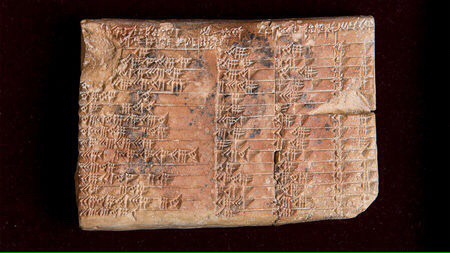We’re Not Nearly As Smart As We Think
For instance, on the planet Earth, man had always assumed that he was more intelligent than dolphins because he had achieved so much — the wheel, New York, wars and so on — whilst all the dolphins had ever done was muck about in the water having a good time. But conversely, the dolphins had always believed that they were far more intelligent than man — for precisely the same reasons.”
— Douglas Adams, The Hitchhiker’s Guide To The Galaxy
Sadly, this is not a post about dolphins. But, we humans, especially modern humans think we’re pretty bright. We laugh at the quaint ideas and people of the past. Don’t get me wrong. We are starting to understand our world to a phenomenal level. I had a granddaughter born a few weeks ago. She was a very sick little girl. A few hours after being delivered by emergency C-section, she was on a Life Flight helicopter headed for Primary Children’s Hospital neonatal intensive care unit. She’s still in the NICU, but the doctors did genetic testing and diagnosed her with a rare genetic blood disorder. Maybe 300 people have ever been diagnosed with it. Had she been born at any time in history up to a few years ago, she most certainly would have died at childbirth.
Yes, we have made some pretty amazing discoveries. However, we sometimes tend to think we understand things better than they did in the past. I’m always amazed when we get it so wrong. That happened this week.

(Photo credit and story)
This is a picture of a 3700 year old Babylonian clay tablet. It was discovered about 100 years ago in modern day Iran. It was recently translated. That translation has transformed two disciplines: History and Math. This is a math table. It shows trigonometry ratios. That might not sound like a big deal. Except that according to history, trigonometry wouldn’t be invented for another 1000 years. And it wasn’t the Babylonians who developed it. It was discovered 1500 miles away in Greece. There’s even a guy who gets credit. Hipparchus of Nicaea is considered the founder of trigonometry.
We will have to rewrite the history books.
But, it’s not that big a deal right? Just a different guy, in a different country, in a different millennia, but math is math.
Nope. Not only does this little tablet change our understanding of history, it changes our understanding of trigonometry. We use a base 10 number system, of course. But, trigonometry is all about angles and circles. Trying to use a base ten number system to describe a circle, or a portion of a circle means you get weird looking numbers that are not exactly exact. Think about it, we don’t divide circles evenly by 10. We divide by 12 (clocks) or 360 (degrees.) You have to make a conversion between 10 digits and 12 points on the circle.
The Babylonians didn’t use a base 10 number system. They used a base 60 number system. At least they did for their trigonometry work. So, if you want to divide a circle by 60? Easy. The researchers estimate that this little table is the most accurate trigonometry table ever created. I’m sure my math friends will cringe at my simplistic descriptions of the finer points of trigonometric theory.
My point is simply that we don’t understand history as well as we thought we did.
Utah is going to get hit by a big earthquake. No one knows exactly when it will happen, of course. But, everyone agrees it’s coming. It will probably be a 7.0 on the earthquake scale. At that level, it would destroy a third of the buildings in Salt Lake City. One of the most prominent buildings in Salt Lake City is the Mormon Temple. It was built over a period of 40 years from 1853 to 1893.

(Photo Credit: Church of Jesus Christ of Latter-day Saints)
The LDS Church was naturally concerned with the damage to this building in the event of an earthquake. A few years ago, the church decided to retrofit the temple to provide earthquake protection. They descended into the basement of the building and started to cut into the foundation. Fortunately, they didn’t get very far. They realized to their amazement that the early architect had built the foundation in a bowl. Rather than a traditional square and flat foundation, the early builders scooped out a bowl and then built the foundation curved to fit into the bowl.
The results were that in the event of an earthquake, the temple would slide back and forth in the bowl rather than be secured to the ground. The 150 year old design was simple, but also more secure than any modern retrofit could make it.
We have amazing scientists and researchers. The discoveries coming in the years ahead are nothing short of miraculous. However, just because our ancestors didn’t have many of the modern tools and resources, it’s comforting to be reminded occasionally, that they were pretty bright and we aren’t as smart as we think we are.
Rodney M Bliss is an author, columnist and IT Consultant. His blog updates every weekday. He lives in Pleasant Grove, UT with his lovely wife, thirteen children and grandchildren.
Follow him on
Twitter (@rodneymbliss)
Facebook (www.facebook.com/rbliss)
LinkedIn (www.LinkedIn.com/in/rbliss)
or email him at rbliss at msn dot com(c) 2017 Rodney M Bliss, all rights reserved
